#the wind 1927
Photo
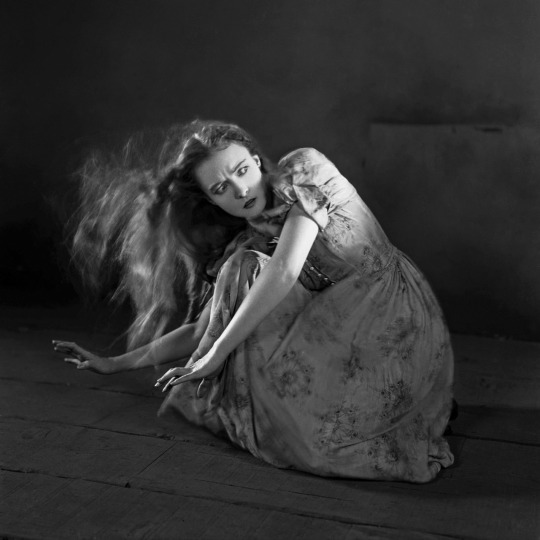
Lillian Gish as "Letty” in The Wind, 1927
#lillian gish#1920s#old hollywood#silent era#classic movies#the wind 1927#vintage#silent film#silent movies#golden age of hollywood#vintage fashion#1920s fashion#black and white#photography#photo restoration#horror
1K notes
·
View notes
Text

Sudden storm. Gay-Neck, the story of a pigeon. 1927.
Internet Archive
307 notes
·
View notes
Text
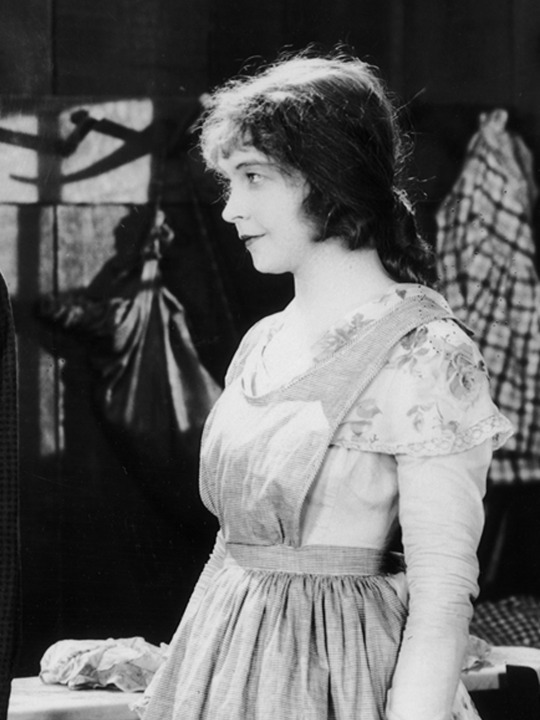
Photo - Lillian Gish as Letty Mason starring in MGM ''The Wind'' 1927
"It is, without any doubt, the most unpleasant picture I've ever made," she replied. "I mean by that, the most uncomfortable to do. I don't mind the heat so much, but working before the wind-machines all the time is never-racking. You see, it blows the sand, and we've put sawdust down, too, because that is light and sails along in he air, and then there are smoke-pots to make it all look even more dusty. I've been fortunate. The flying cinders haven't gotten into my eyes, although a few have burned my hands."
"You must see the sights of the desert," said Miss Gish. "Yonder in that box are two rattlesnakes that were caught yesterday, and on up the road is the camp where most of the people are housed."
5 notes
·
View notes
Text
all the illustrated pages in my film journals (you may notice a theme)
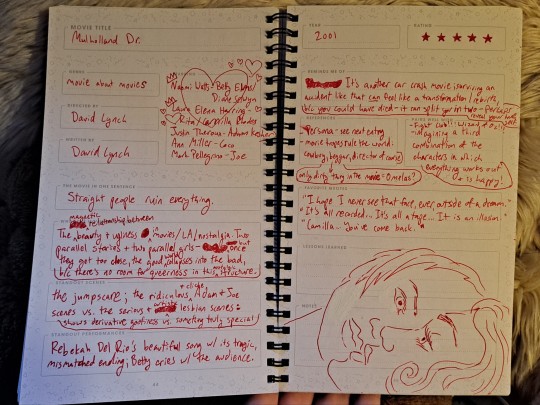


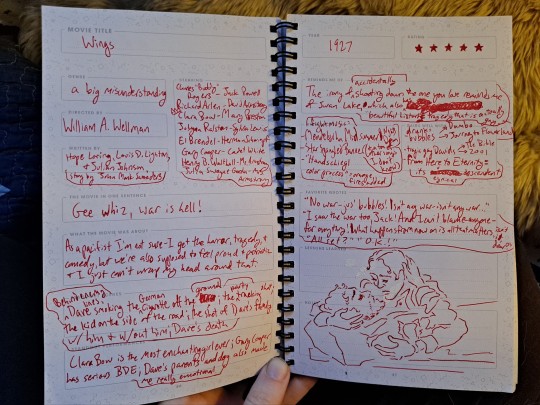
#mulholland drive#the song of the wind and trees#dersu uzala#wings 1927#my art#my terrible handwriting
6 notes
·
View notes
Text
Cab Calloway - Minnie the Moocher
1931
"Minnie the Moocher" is a jazz-scat song first recorded in 1931 by Cab Calloway and His Orchestra, selling over a million copies and was the biggest chart-topper of that year. "Minnie the Moocher" is most famous for its nonsensical ad libbed ("scat") lyrics. In performances, Calloway would have the audience and the band members participate by repeating each scat phrase in a form of call and response, eventually making it too fast and complicated for the audience to replicate. The song is based lyrically on Frankie "Half-Pint" Jaxon's 1927 version of the early 1900s vaudeville song "Willie the Weeper".
"Minnie the Moocher" was inducted into the Grammy Hall of Fame in 1999, and in 2019 was selected for preservation in the National Recording Registry as "culturally, historically, or aesthetically significant" by the Library of Congress.
In 1978, Calloway recorded a disco version of "Minnie the Moocher" on RCA Records which reached number 91 on the Billboard R&B chart. "Minnie the Moocher" has been covered or simply referenced by many other performers. Its refrain, particularly the call and response, is part of the language of American jazz. At the Cab Calloway School of the Arts, which is named for the singer, students perform "Minnie the Moocher" as a traditional part of talent showcases.
In 1932, Calloway recorded the song for a Fleischer Studios Talkartoon short cartoon, also called Minnie the Moocher, starring Betty Boop and Bimbo, and released on March 11, 1932. Calloway and his band provide most of the short's score and themselves appear in a live-action introduction, playing "Prohibition Blues". The thirty-second live-action segment is the earliest-known film footage of Calloway. In the cartoon, Betty decides to run away from her parents, and Bimbo comes with her. While walking away from home, Betty and Bimbo wind up in a spooky area and hide in a hollow tree. A spectral walrus—whose gyrations were rotoscoped from footage of Calloway dancing—appears to them, and begins to sing "Minnie the Moocher", with many fellow ghosts following along, during which they do scary things like place ghosts on electric chairs who still survive after the shock. After singing the whole number, the ghosts chase Betty and Bimbo all the way back to Betty's home. In 1933 another Betty Boop/Cab Calloway cartoon with "Minnie the Moocher" was The Old Man of the Mountain.
Calloway performed the entire song in the movie Rhythm and Blues Revue (1955), filmed at the Apollo Theater. Much later, in 1980 at age 73, Calloway performed the song in the movie The Blues Brothers. Calloway's character Curtis, a church janitor and the Blues Brothers' mentor, magically transforms the band into a 1930s swing band and sings "Minnie the Moocher" when the crowd becomes impatient at the beginning of the movie's climactic production number.
"Minnie the Moocher" received a total of 71,1% yes votes!
youtube
1K notes
·
View notes
Text

Nakayama Tadashi (Japanese,1927-2014)
Two Horses Toward the Wind, 1987
Woodblock print
553 notes
·
View notes
Text
in honour of ron dennis being knighted, here is a non-exhaustive list of my favourite ron dennis insanity moments:
ronspeak – the existence of his own ultra-corporate, long-winded, information free method of communication that f1 journalists dubbed ronspeak and still make jokes about to this day
refusing to be blackmailed by fernando alonso over spygate, going to max mosely and bernie eccleston to confess about it, earning mclaren the largest fine in sporting history (not just f1) almost entirely because they didn’t like him
his insistence on everything at mclaren being painted in grey, white, or silver, including the cars. former employees have genuinely used the word “orwellian” to describe it, as well as comparing it to Metropolis, the 1927 german sci-fi about class inequality where the workers live underground
the time he used a mechanic as an arm rest whilst yelling at kimi raikkonen before the disaster that was the 2005 us grand prix
getting so angry at adrian newey for secretly having his office repainted to be less suicide inducing (something adrian newey has actually said) that newey legitimately thought he was going to have a heart attack
trying to prevent mclaren employees from having tea, coffee, and even water at their desks. he only relented when someone pointed out that it probably wasn’t legal to prevent workers from drinking water
hiring fernando alonso, having him bribe mechanics and engineers, speak openly in emails about spygate, attempt to blackmail him over spygate, nearly cause an aneurysm by eating a peach messily, part ways with him, and then hire him AGAIN, less than a decade later just for him to publically criticise the car and the team’s partnerships
banning personal effects from workers’ desks in mclaren headquarters, eventually allowing a single family photograph on the condition that it was stored in a drawer overnight
congratulations ron dennis you strange, strange man
264 notes
·
View notes
Text
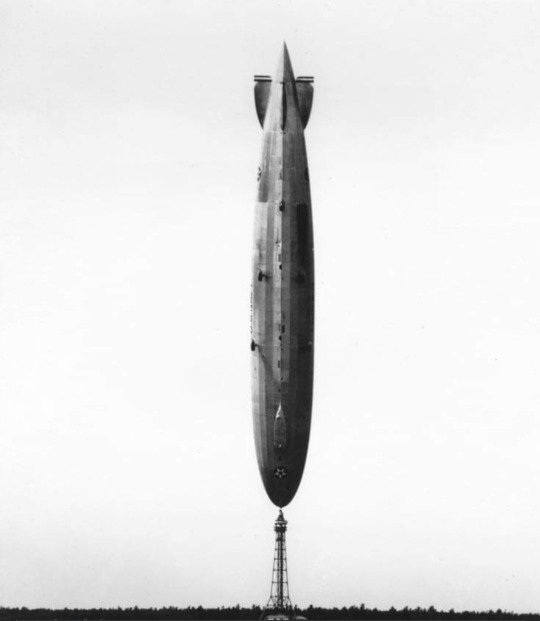
A gust of wind stands the moored USS Los Angeles on it's nose.
1927, Naval Air Station Lakehurst, New Jersey.
333 notes
·
View notes
Text
The most annoying thing about the AI art theft thing is, of course, how unethical it is, but the second most is that, as far as I can tell, it's entirely unnecessary. You could train an AI on all art created from the literal dawn of human history to 1927 (public domain cutoff for the US), and that would be fine. Maybe you'd have to work out an arrangement with the photographers taking pictures of that art - I'm not sure how copyright works in those cases - but the art itself is legally and ethically available. You could train an AI on only scans of pre-1927 photographs, for that matter. You could train an AI on Creative Commons stuff, and just have a 'works cited' list somewhere on your website. You could train an AI on free stock photos. Heck, a lot of those are even tagged pretty well already, and that's what stock photos are for, use in larger projects. You could ask people to donate stuff they own the copyright to. Most people wouldn't, but there are enough technophiles out there who would buy in. There are so many reasonable solutions before you even get to the point of 'pay people for their work,' and yet you wind up with stuff like that one person finding their own confidential medical photographs in a data training set. It's appalling.
275 notes
·
View notes
Text

alfred rocking some different flight jackets (nerd stuff under cut)
The flight jacket, an iconic piece of any aviator's outerwear. Before they ever became symbols of fashion and the 'exalted' place that came with the occupation of pilot, the flight jacket as we know it was first made for function. Aircraft of World War I and the earliest designs were open cockpit machines, and many would remain that way in the Interbellum. All that to say this paramount paraphernalia's original purpose was to keep an aviator warm in the sky.
Keep in mind that the images above may not reflect every specimen of their type. Jackets differed in design by manufacturer, production block, and even by the military branch (Navy jackets also often have a different name) & unit ordering them. A great example is the wide range of looks for the quintessential B-3. My apologies in advance for them being all American designs. I would love to show off some of the British flight jackets, but I would rather do a little more research (and practice drawing Arthur more)!
A-1 (1927-1931)
A thin leather jacket designed for lower altitudes and made with a flattering fit high on the waist, the A-1 was the kickstart to the wide variety the Army Air Corps would come to know. The A-1 had differing designs between the Navy and the infant Air Corps, and early A-1s are distinguished by having seven buttons and a knit collar, which later models did not keep. However, later models did retain the knit waistband and cuffs.
A-2 (1931-1943)
The direct successor to the A-1, the A-2 quickly replaced its older brother. This is one of the more recognizable jackets from the States after becoming the standard for the Air Corps in the early 1930s. The quality of the jackets would fall due to wartime rationing, with early designs of horsehide and silk becoming goatskin and cotton, however, the general look remained. The A-2 was still primarily for open cockpit designs, lower altitudes, and warmer climes. Identifiable from the A-1 by its snap-down leather collar, zipper, and varying shapes and sizes of a hook-and-eye clasp at the collar to close it.
G-1 (1938-present)
This looker would replace the A-2 in form and function during the 1940s, first becoming popular with the Army and Navy before being adopted by USAAF. Originally named the ANJ-3/AN-J-3 the jacket gained its new designation by the time the Air Corps caught on. The G-1 came with a mouton collar and a bi-swing back to allow for greater arm movement, meanwhile, it lacked the over-zipper 'wind flap' of its predecessors. A keen eye for pop culture might realize that this is the jacket from the 1986 hit Top Gun.
B-3 (1934-1943)
Ah, the B-3! Commonly known simply as the "bomber jacket," the B-3 was made with a high-altitude bomber in mind, unlike previous designs. Incredibly bulky and lined with sheepskin the B-3 was made to keep crews at 25,000 feet above from freezing in their unpressurized cabins, with many such as the early B-17 Flying Fortresses possessing open waist gunner ports. The wide collar could be closed with two leather straps and the jacket did not come with the famous knit waistband or cuffs that others did. "The General" was a B-3 design made specifically for General George S. Patton, who popularized the B-3 outside of the Air Corps. (The B-3 had a slimmer cousin - the B-6 - designed as the 'quality of life' inside bombers improved, such as pressurized cabins.)
B-7 (1941-1942)
Short-lived, the B-7 Parka was manufactured for pilots operating in the brutal cold of Alaska. However, not much is known of it due to its limited production. In fact, the B-7 was discontinued swiftly due to its high manufacturing cost. Either way, the B-7 is a funky one-off that is easily distinguishable from the lineup by its three-quarter length and coyote-lined hood.
B-15 (1944-1954)
The infamous green flight jacket that many today typically know as the "bomber jacket". The B-15 quickly replaced its older brother, the B-10 (1943-1944). Like other designs it had many variations. Similar to the G-1, the B-15 shared the same pocket design and lack of a wind flap, yet the B-15 was cloth with a mouton collar and a knit waistband and cuffs. The shell was produced in a range of materials including nylon and cotton-rayon. It was lighter weight and far less warm than its sheepskin predecessors and spoke to the advancements in aviation technology. A quirk of its design that soon became standard was the designated pen pocket on the upper left arm.
Thank you for coming to my TED Talk.
#hetalia#aph america#hws america#alfred f jones#hetalia headcanons#historical hetalia#alpha romeo tango#gremlin's things with wings#alfred f. jones // daring to fly#back at you guys again with an aviation-flavored infodump#as the owner of an a-2 jacket i must sing its praises for i have taken many a glorious nap within its shell#someday i'm going to be that weird old neighbor with a bunch of weird shit like flight jackets in my closet just for the shits
657 notes
·
View notes
Text

Circumnavigation of the Wind, by John Bentham Dinsdale (British, 1927-2008)
73 notes
·
View notes
Photo

Lillian Gish as “Letty” in The Wind, 1927
#lillian gish#1920s#classic movies#old hollywood#silent film#1920s fashion#vintage fashion#vintage#silent era#silent movies#golden age of hollywood#the wind 1927#black and white#photography
105 notes
·
View notes
Text

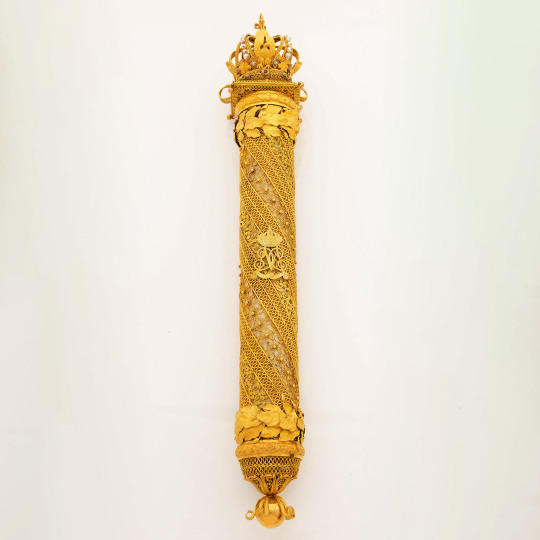
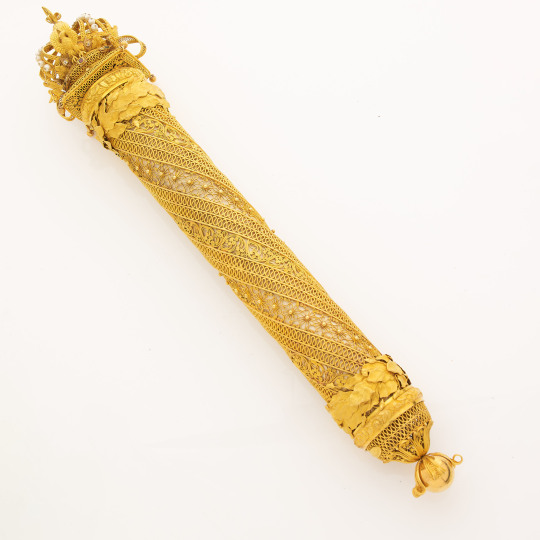




Specter of Empress Charlotte Of Mexico (1840-1927)
Openwork in gold filigree and friezes of flowers and foliage. It is placed on a ball between windings, and topped with an openwork imperial crown of gold threads, pearls and eagles with outstretched wings.
The crown, placed on an openwork cushion in gold trimmings, is embellished with rubies, emeralds, and bezel set diamonds.
The scepter is decorated at the ends with leaves and finely chiselled acorns in relief. It is applied with a crowned cipher surmounting the inscription “San Juan del Rio 1864”.
At the base a small plate bearing the signature of the goldsmith Jose Maria Larralde. It contains a document signed by Mr. Angel M.Dominguez relating the various honorary marks that the Municipal Council of San Juan del Rio wishes to establish following the accession to power of Maximilien and Charlotte. Preserved in its shaped case.
Height: 34 cm, Gross weight: 418,50g. 22K-916/1000.
Origin :
-Offered by King Leopold II to Baron Adrien Goffinet and in gratitude for his good and loyal services
Courtesy: HVMC
#art#design#overdose#gold#jewellery#jewelry#luxurious#diamond#luxurylifestyle#empresse#imperial#charlotte of mexico#spectrum#ruby#emerald#history#style#crown#filigree#hvmc
118 notes
·
View notes
Text
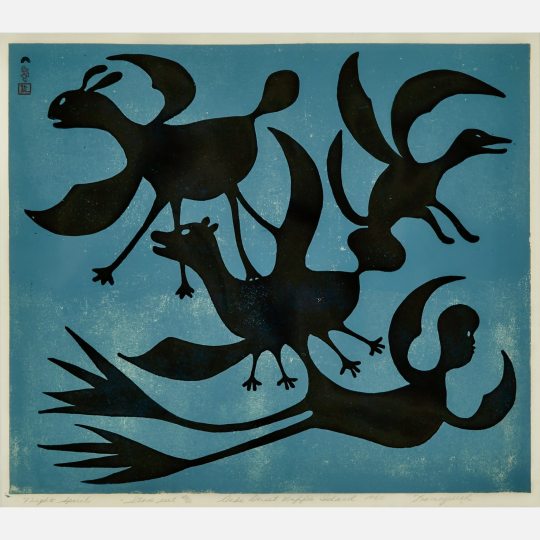
Another fine solstice image: Night Spirits by Inuk artist Kenojuak Ashevak (1927-2013)
* * * *
“Listen to the air. You can hear it, feel it, smell it, taste it. Woniya wakan—the holy air—which renews all by its breath. Woniya, woniya wakan—spirit, life, breath, renewal—it means all that. Woniya—we sit together, don’t touch, but something is there; we feel it between us, as a presence. A good way to start thinking about nature, talk about it. Rather talk to it, talk to the rivers, to the lakes, to the winds as to our relatives.”
― John (Fire) Lame Deer, Lame Deer, Seeker of Visions
[alive on all channels]
#night spirits#Kenojuak Ashevak#about art#alive on all channels#John Lame Deer#Lame Deer Seeker of Visions#quotes
41 notes
·
View notes
Text

KAZUYA SAKAI (1927 - 2001, ARGENTINE )
Neither Wind nor Banner.
Oil on canvas, 1963
Swann Galleries
57 notes
·
View notes
Text

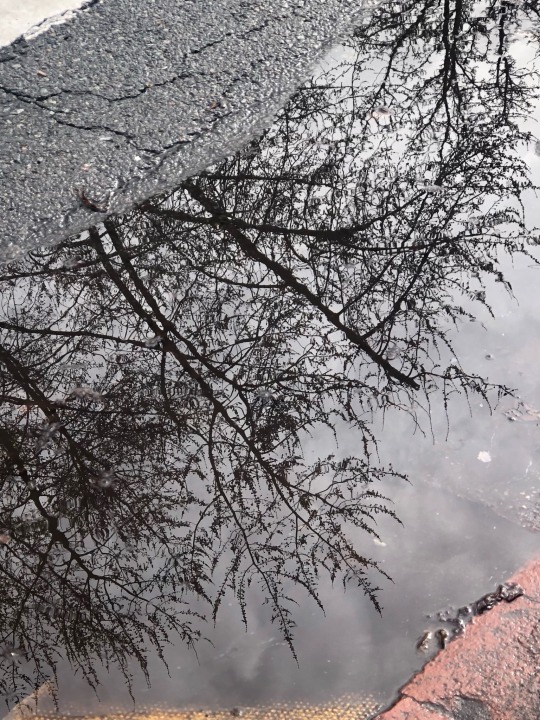

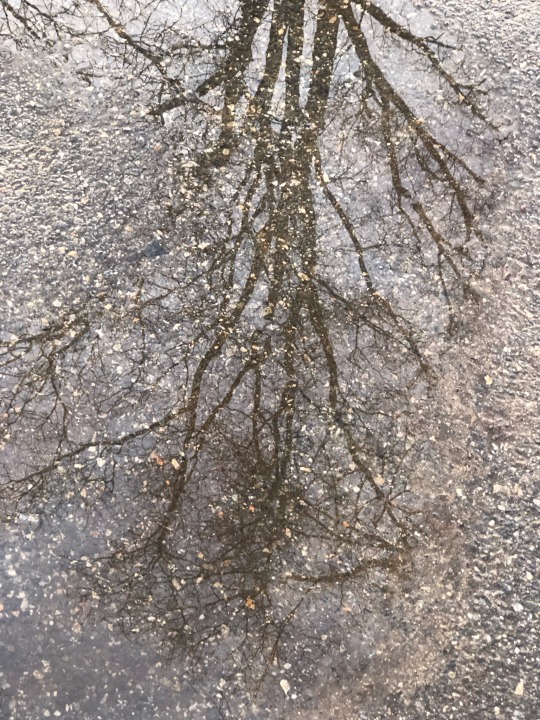
The ghostly reflections of tree branches mirrored in puddles.
(Or: when thawing snow turns the world into a looking glass.)
It took me extra long to walk to the Black Power Studies seminar today. Perambulating down Oxford Street, I was distracted by every image I saw reflected in the puddles—the sun behind the clouds, the buildings, the power lines, the birds, the gloomy sky. While I was staring at a puddle I was shaken by the sudden THUD of a pedestrian getting hit by a gold minivan. The pedestrian seemed okay, but that unsettling feeling that life can end at any moment stayed with me throughout the day.
Strangely, Virginia Woolf had a lot to say about puddles and mortality. Some quotes:
Some cleavage of the dark there must have been, some channel in the depths of obscurity through which light enough issued […]. The mystic, the visionary, walking the beach on a fine night, stirring a puddle, looking at a stone, asking themselves “What am I,” “What is this?” […].
—To the Lighthouse (1927)
“There is the puddle,” said Rhoda, “and I cannot cross it. I hear the rush of the great grindstone within an inch of my head. Its wind roars in my face. All palpable forms of life have failed me. Unless I can stretch and touch something hard, I shall be blown down the eternal corridors for ever.”
— The Waves (1931)
There was the moment of the puddle in the path; when for no reason I could discover, everything suddenly became unreal; I was suspended; I could not step across the puddle; I tried to touch something . . . the whole world became unreal.
— “A Sketch of the Past” (1939)
.
.
The sudden dissolution of the world, of the self. That’s the horror of the puddle that cannot be crossed, the puddle that augurs madness.
I swear I remember reading about the puddle-grindstone passage in Woolf’s diary, which was absorbed into her novel The Waves. In my vague memory it was connected to news from (Ethel Smyth?) about someone’s suicide. Someone named Carrie, or Caroline, I swear there was an incident that sent Woolf spiraling. An adult incident, a repetition of the dissociative puddle incident from her childhood. But now I cannot find it. Or maybe it was connected to news from Vita, I don’t know. Or maybe the news of the mutual friend’s suicide and the fear of crossing the puddle were falsely fused in my mind by the intensity of my fixations. I had filed the detail away in a dusty drawer of my brain because of the suicided Carrie I knew, the one mirrored everywhere in Woolf’s work. Water suicides. I keep thinking they reveal: there is no ontology. Only God has being, as the Sufi metaphysicians say (and strikingly, the Ocean is the proverbial metaphor for union with God in Sufi poetry, for the only way to stop a drop from drying up is to throw it in the ocean).
#literature#viriginia woolf#Woolf#the waves#to the lighthouse#puddles#water#trees#waters of oblivion#oceanic feeling#ontology#sufi metaphysics#sufism
27 notes
·
View notes